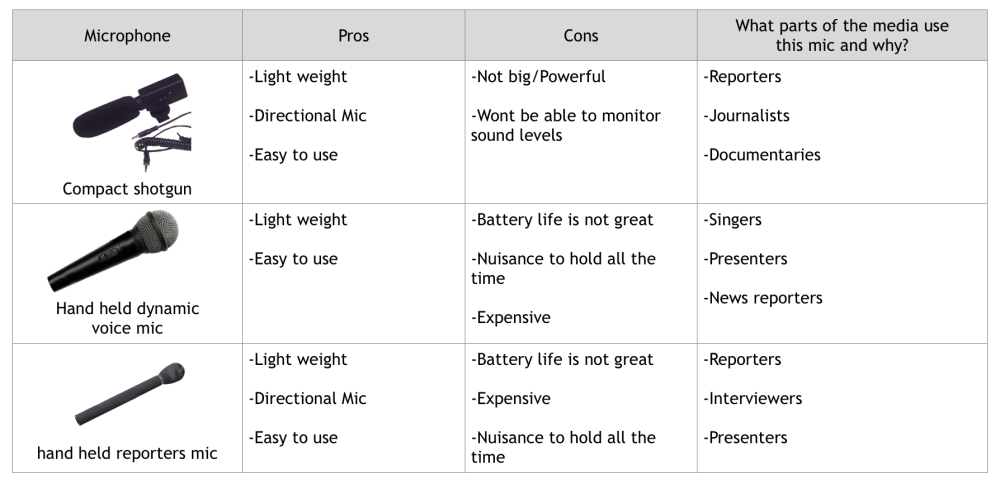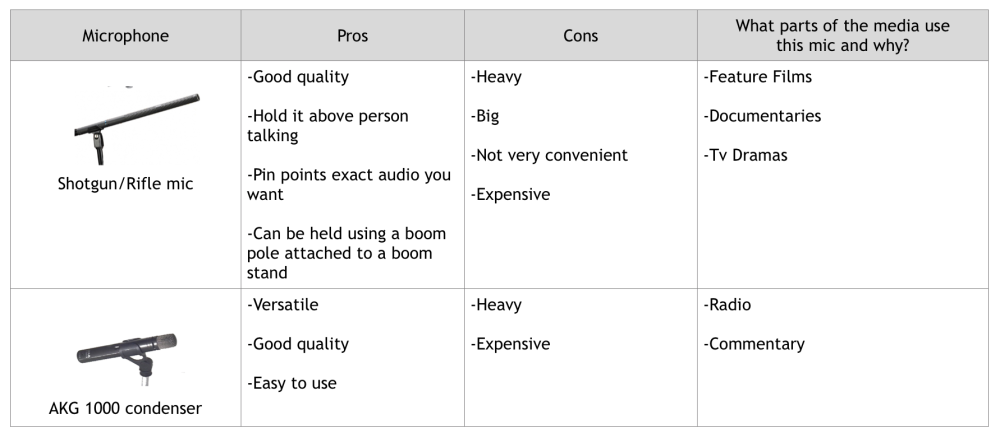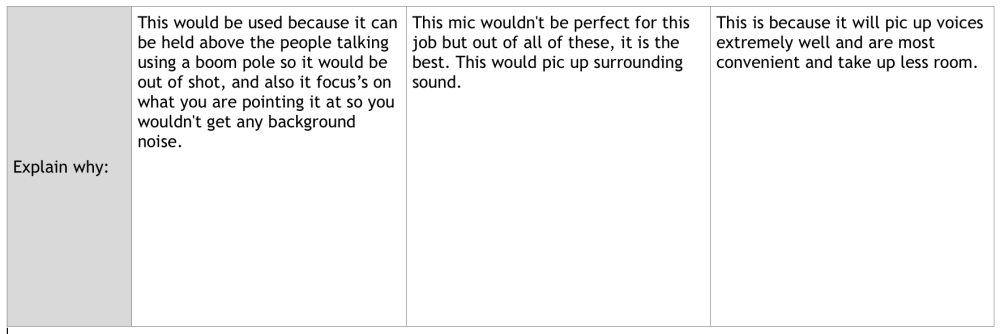Capturing Sound
In todays lesson with Caroline we looked at the opening scene from Watchmen.
Foley sound
There was a lot of foley sound in this scene. Some that i wrote down were:
- China Smashing
- Punching
- Glass smashing
- Liquid pouring
- Leather gloves
- Rolling on the floor
- Knifes
- Blood dripping onto badge
- Badge falling and rolling on concrete
- Footsteps
- Door kicked down
All of these sounds were amplified which gives it a comic book feel.
Ambient sound
The only ambient sound in the Watchmen scene was rain.
Contrapuntal sound
At the begining of the scene, there is a love song playing, which then carries on throughout the fight scene. This creates conflict within the audience.
Diegetic sound
- Tv
- Glass and china smashing
- Music was non-diegetic at the start because it was coming from the TV, but then the tv breaks and the music carries on, so it becomes diegetic.
Non-diegetic
- Music
Dialogue
- TV
- Men talking to eachother
We also learned some new terms.
External Diagetic Sound – Comes along the same lines of non-diegetic, as it is put into the scene from outside the shot but can be heard by the characters and audience. An example can be foley sound.
Studio Sound Recording – Were sounds are recorded in a recording studio or radio station. They can be used to capture voice overs. Recording in a studio is often more optimal for TV shows as the sound is more clearer and distinct.
Location Sound Recording – Recording on location means exactly as it sounds, it tends to be a location that isn’t specialised for sound optimisation so there are certain things you can use to get the best out of the audio.
Stationary Sound Sources – Come from a person or an object that is not moving. The sound of a stationary object has a constant quality, the pitch and volume stay the same because the microphone is picking up the sound from the same spot.
A Moving Sound Source – comes from a source that is moving in any direction from the point where sound is being recorded.
Presence – In filmmaking and television production presence (or room tone) is “silence” recorded at a location or space when no dialogue is spoken. This sound can be mixed so the audience can feel where the sound is coming from.
Drama Dialogue – The dialogue between characters on set. This can be to capture without obvious tie mics. This is where boom mics are used, there are normally on or more boom operators in order to capture the dialogue of each character.




